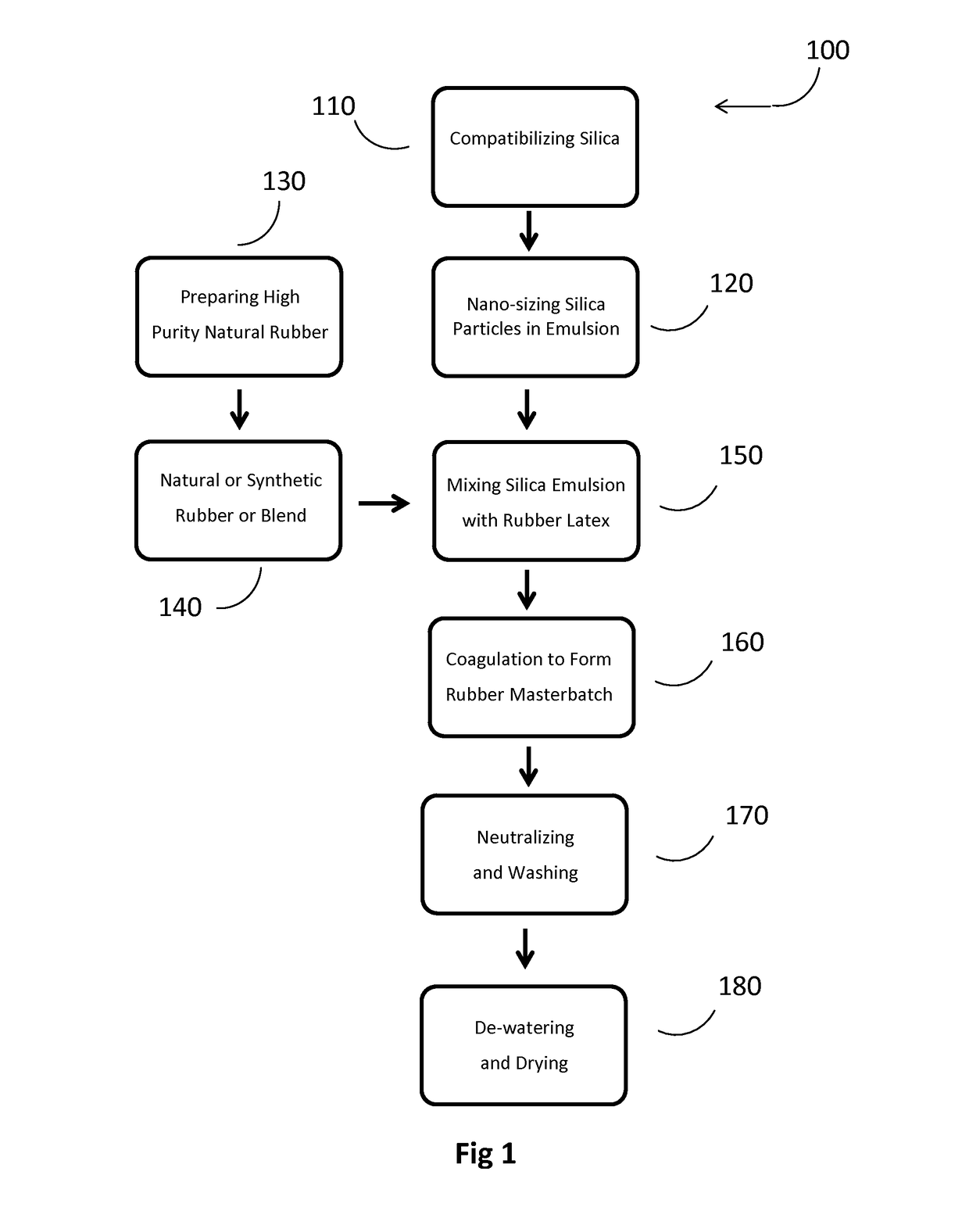A process to prepare high-quality natural rubber silica masterbatch by liquid phase mixing
a technology of liquid phase mixing and masterbatch, which is applied in the field of process to prepare high-quality natural rubber silica masterbatch by liquid phase mixing, can solve the problems of poor compatibility between the silica and the rubber matrix, the interface between the rubber and the filter also affects the reinforcement of rubber, and it is difficult to obtain a good dispersion within the rubber matrix
- Summary
- Abstract
- Description
- Claims
- Application Information
AI Technical Summary
Benefits of technology
Problems solved by technology
Method used
Image
Examples
example 1
on of SMB with Nanosized and Compatibilized Silica (30 Phr)
[0049]A. Preparation of Compatibilized Silica
[0050]The surface of silica of very fine particle size was first chemically modified to enhance its hydrophobicity and improve the compatibility with the rubber latex. Thus, silica from commercial sources (such as Ultrasil 5000 GR) was added to a mixer, wherein it was heated with stirring and proper ventilation to 60° C., followed by an appropriate amount of a bifunctional organosilane coupling agent (such as Si 69®) added slowly with stirring. The selection of the proper type and amount of the coupling agent is discussed in the Detailed Description section. Upon completing the addition of the coupling agent, the resulting mixture was heated to 100-120° C. and maintained at that temperature for 3 hours with the stirring continued. The heating was then stopped while the mixing continued for another 30 min. The total sulfur content of the compatibilized silica was measured to be abo...
example 2
on of SMB with Nanosized and Compatibilized Silica (50 Phr)
[0059]The SMB is prepared with a procedure very similar to that in Example 1, except by using 183.8 g of the compatibilized silica, 735 g of deionized water and 0.92 g of the dispersing gent, NNO.
example 3
on of SMB with Nanosized and Compatibilized Silica (60 Phr)
[0060]The SMB is prepared with a procedure very similar to that in Example 1, except by using 220 g of the compatibilized silica, 880 g of deionized water and 1.10 g of the dispersing gent, NNO.
PUM
| Property | Measurement | Unit |
|---|---|---|
| weight percent | aaaaa | aaaaa |
| temperature | aaaaa | aaaaa |
| temperature | aaaaa | aaaaa |
Abstract
Description
Claims
Application Information
 Login to View More
Login to View More - R&D
- Intellectual Property
- Life Sciences
- Materials
- Tech Scout
- Unparalleled Data Quality
- Higher Quality Content
- 60% Fewer Hallucinations
Browse by: Latest US Patents, China's latest patents, Technical Efficacy Thesaurus, Application Domain, Technology Topic, Popular Technical Reports.
© 2025 PatSnap. All rights reserved.Legal|Privacy policy|Modern Slavery Act Transparency Statement|Sitemap|About US| Contact US: help@patsnap.com

